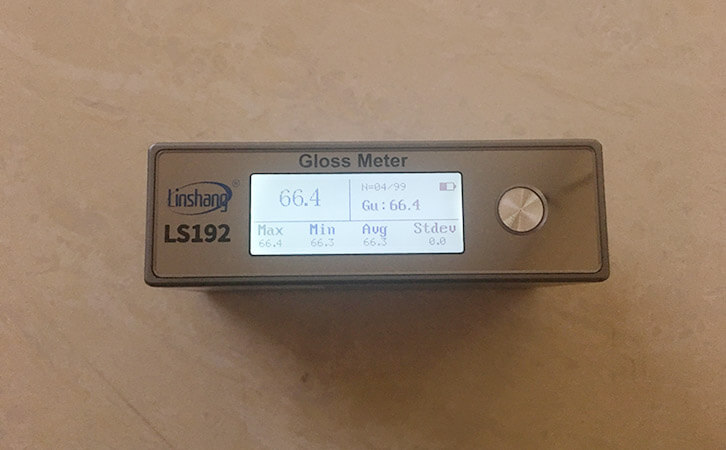How to Choose a Gloss Meter?
There are many types of gloss meters on the market, and customers should choose the gloss meter that suits them according to their own practical conditions. So how to choose a gloss meter that suits you?
1. Definition of gloss
Gloss is a physical quantity that evaluates the ability of a material to reflect light at a set of geometrically specified conditions, with directional selective reflection properties. The gloss we usually say refers to "specular gloss," so the gloss meter is sometimes called the "specular gloss meter." The reference standard is a black glass with a refractive index np=1.567, assuming that its plane is in a state of ideal polishing, the natural beam is mirror-reflected by the plane, and the gloss value at this time is defined as 100 gloss units.
2. Type of gloss meter
According to the angle of incidence, the gloss meter can be divided into: 20 degree, 45 degree, 60 degree, 75 degree and 85 degree gloss meter. At present, the most used in the gloss meter are mainly 20 degrees, 60 degrees and 85 degrees.
According to the function, the gloss meter can be divided into single angle, dual angle and triple angle gloss meters.
According to the measurement range, many gloss meters are divided into three types: 0-200GU, 0-1000GU, and 0-2000GU.
3. Classification of gloss
Gloss can be divided into high gloss, medium gloss and low gloss, more than 70 GU is called high gloss, between 10GU to 70GU is called medium gloss, and less than 10GU is called low gloss. This is based on the test data of a 60 degree angle gloss meter. If the test data is higher than 70GU, you can replace the 20 degree angle gloss meter to improve the resolution; if the test data is lower than 10GU, it is recommended to replace the 85 degree angle gloss meter to improve the resolution. Therefore, we also often call the 60-degree gloss meter a universal gloss meter.
4. Test angles applicable to different materials
20°, 60°, 85° are common test angles and are suitable for most materials such as paints, coatings, plastics, etc. Among them, 20° is suitable for high-gloss materials, and 85° is suitable for low-gloss materials. The 60° gloss meter is a universal type. Today, when the gloss meter technology is mature, the 60° angle has been applied to the surface gloss test of all materials and can meet the high precision requirements of customers.
The 45° angle gloss meter is suitable for the gloss measurement of ceramics.
The 75° angle gloss meter is mainly used for the gloss measurement of some films.
Through the above introduction, I believe that many readers have the answer in mind, now we no longer needs to spend too much time in choosing the test angle of the gloss meters, the universal 60-degree gloss meter can solve all problems. All we have to do is choose the right measurement range according to the materials we need to test.
